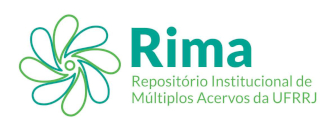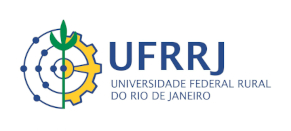Please use this identifier to cite or link to this item:
https://rima.ufrrj.br/jspui/handle/20.500.14407/20637| Tipo do documento: | Dissertação |
| Title: | Diversidade genética e estrutura populacional de três espécies arbóreas em um manguezal restaurado: Implicações para a restauração |
| Other Titles: | Genetic diversity and population structure of three tree species in a restored mangrove: Implications for restoration |
| Authors: | Santos, Alan Andrade dos |
| Orientador(a): | Freitas, André Felippe Nunes de |
| Primeiro coorientador: | Lira, Catarina da Fonseca |
| Primeiro membro da banca: | Freitas, André Felippe Nunes de |
| Segundo membro da banca: | Sansevero, Jerônimo Boelsums Barreto |
| Terceiro membro da banca: | Mori, Gustavo Maruyama |
| Keywords: | degradação ambiental;diversidade genética;restauração ecológica;manejo;degradation;genetic diversity;restoration;management |
| Área(s) do CNPq: | Recursos Florestais e Engenharia Florestal |
| Idioma: | por |
| Issue Date: | 27-Feb-2023 |
| Publisher: | Universidade Federal Rural do Rio de Janeiro |
| Sigla da instituição: | UFRRJ |
| Departamento: | Instituto de Florestas |
| Programa: | Programa de Pós-Graduação em Ciências Ambientais e Florestais |
| Citation: | SANTOS, Alan Andrade. Diversidade genética e estrutura populacional de três espécies arbóreas em um manguezal restaurado: Implicações para a restauração. 2023. 54 f. Dissertação (Mestrado em Ciências Ambientais e Florestais) - Instituto de Florestas, Universidade Federal Rural do Rio de Janeiro, Seropédica, 2023. |
| Abstract: | O ecossistema de manguezal ocorre em regiões tropicais e subtropicais de todo o mundo e caracteriza-se por ser um ambiente onde as plantas são adaptadas às alterações hidrológicas constantes devido a sua ocorrência em áreas entremarés. Em função de sua localização litorânea, sofrem com distúrbios antrópicos de diferentes intensidades e origens, que levam à perda de sua cobertura original, perda de biodiversidade e de seus papéis ecossistêmicos. Este é o caso do Parque Natural Municipal Barão de Mauá (PNMBM), que, além da histórica perda de cobertura vegetal, a área foi intensamente afetada por um derramamento de óleo. Desta forma, o estudo tem como objetivo analisar a estrutura populacional das três espécies arbóreas e verificar a diversidade genética da espécie Avicennia schaueriana utilizada na restauração ecológica do manguezal do PNMBM após o derramamento de óleo e passa por um processo de restauração. Para a análise da estrutura populacional, foram colocadas o método de parcelas e subparcelas divididas entre as três áreas com idades de restauração distintas e pré-definidas no escopo do estudo, 60 parcelas para indivíduos adultos e 300 subparcelas para indivíduos plântulas para obter medidas estruturais dos indivíduos de A. schaueriana, Laguncularia racemosa e Rhizophora mangle. Para analisar a diversidade genética da população de A. schaueriana na área restaurada, foi utilizada a técnica de marcadores moleculares ISSR (Inter Simple Sequence Repeat). Os resultados mostraram a ausência de padrões de zonação de mangue no PNMBM e baixo número de indivíduos de A. schaueriana adultos e plântulas com um grande destaque da espécie L. racemosa presente e homogênea em todos os bosques amostrados. Os resultados do estudo de caso de diversidade genética indicam uma baixa diversidade em geral e uma alta taxa de endocruzamento da espécie A. schaueriana. Os estudos mostraram que a área restaurada do PNMBM necessita de manejos específicos a fim de recuperar a diversidade genética e estrutural de uma espécie pouco abundante e altamente necessária para a manutenção do sistema manguezal. |
| Abstract: | The mangrove ecosystem occurs in tropical and subtropical regions around the world and is characterized by being an environment adapted to constant hydrological changes due to its occurrence in intertidal areas. Due to their coastal location, they suffer from anthropic disturbances of different intensities and origins, which lead to the loss of their original cover, loss of biodiversity and their ecosystem roles. This is the case of the Barão de Mauá Municipal Natural Park, which, in addition to the historic loss of vegetation cover, the area was intensely affected by an oil spill. Thus, the study aims to analyze the population structure of the three tree species and verify the genetic diversity of the species Avicennia schaueriana used in the ecological restoration of the PNMBM mangrove after the oil spill. For the analysis of the population structure, ecological plots divided between the three areas with different restoration ages and pre-defined in the scope of the study were placed to obtain structural measures of the individuals of A. schaueriana, L. racemosa and R. mangle. To analyze the genetic diversity of the A. schaueriana population in the restored area, the ISSR (Inter Simple Sequence Repeat) molecular marker technique was used. The results showed the absence of mangrove zonation patterns in the PNMBM and a low number of A. schaueriana adults and seedlings with a great prominence of the L. racemosa species present, homogeneous in all sampled forests. The genetic diversity results indicate a low overall diversity and a high inbreeding rate. The studies showed that the restored area of the PNMBM needs specific management in order to recover the genetic and structural diversity of a species that is not very abundant and highly necessary for the maintenance of the mangrove system. |
| URI: | https://rima.ufrrj.br/jspui/handle/20.500.14407/20637 |
| Appears in Collections: | Mestrado em Ciências Ambientais e Florestais |
Se for cadastrado no RIMA, poderá receber informações por email.
Se ainda não tem uma conta, cadastre-se aqui!
Files in This Item:
| File | Description | Size | Format | |
|---|---|---|---|---|
| 2023 - Alan Andrade dos Santos.pdf | 2.02 MB | Adobe PDF |  View/Open |
Items in DSpace are protected by copyright, with all rights reserved, unless otherwise indicated.

